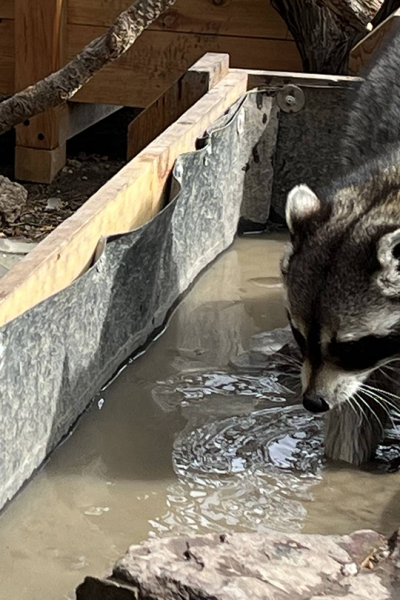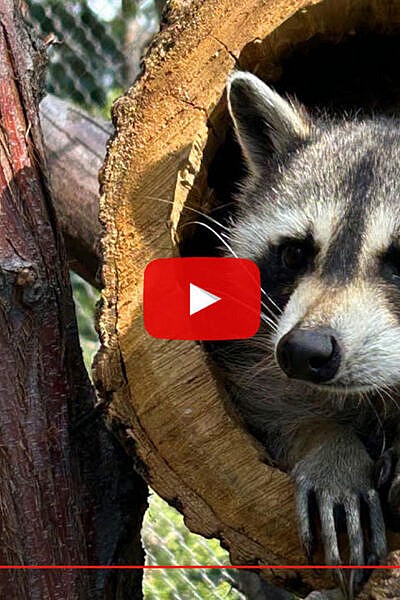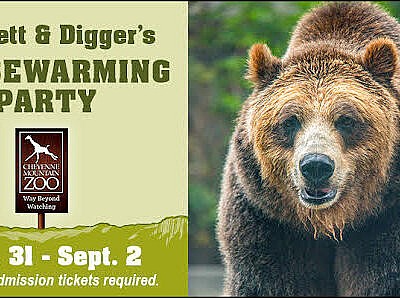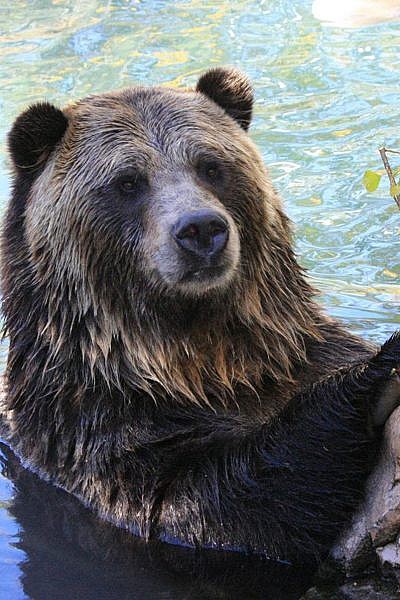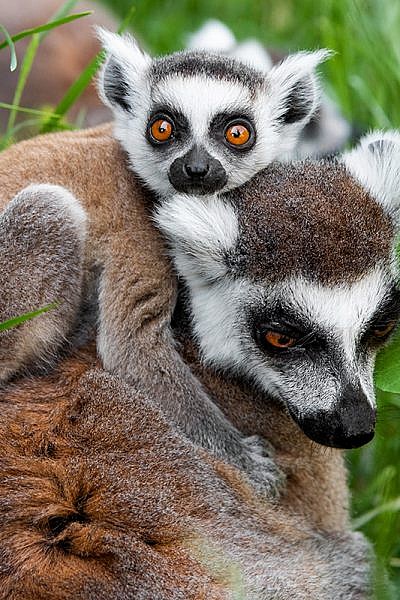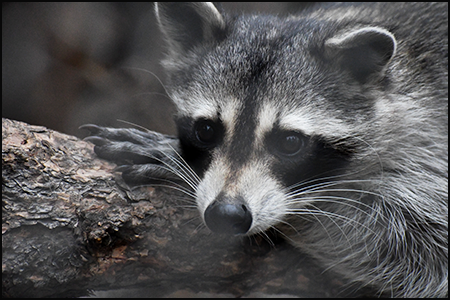
Baldwin, Benton and Baker, the raccoon brothers who call Rocky Mountain Wild home, recently took up a new hobby, thanks to their keepers’ creativity and Cheyenne Mountain Zoo’s commitment to environmental enrichment. Their habitat now features an exciting new addition: an elevated stream where they can fish, forage and explore on their own schedules.
“Raccoons love to solve problems, splash in water and, of course, eat,” Kelsey Walker, Rocky Mountain Wild animal keeper, says. “This stream is a dream come true for them, and our guests seem to love watching their adorable methods.”
Inspired by the old-fashioned gold panning stations of the American West, the new wooden enrichment feature consists of three connected elevated ‘streambeds,’ each about eight feet long and two feet wide. The beds are full of about five inches of dirt, sand, rocks and shells, and flooded with water. Keepers bury shrimp, mussels and crab legs in the substrate, encouraging the raccoons to rely on their natural foraging skills.
The enrichment was introduced in February, and from the very beginning, the raccoons took to it immediately.
“These raccoons were born in human care, but they instinctively knew how to fish right away,” Kelsey says. “They perch on the rocks or wade into the streams, patting the surface with their paws until they detect food. They dig it out, roll it in their paws to find the weakest spot to crack into it, and then settle somewhere dry to eat.”
Raccoons are incredibly tactile animals. Seventy-five percent of the part of their brain that manages the sense of touch is dedicated to their forepaws. Their paws often tell them more about their environment than their noses or eyes. That makes ‘blind fishing’ in muddy streams a cinch. They can solve the ‘mud problem’ and locate prey underwater – or under rocks – just by feeling around the surface.
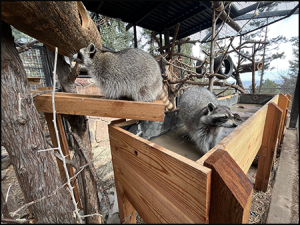
The brothers typically spend 15 to 30 minutes fishing before moving on to other activities, but they return to the streams multiple times each day and night. It’s safe to say that fishing is their new favorite hobby. In addition to fishing, they have a variety of enrichment opportunities throughout their space, including a dry foraging bin filled with hay, shavings, peas and corn, and fruit hanging from trees to encourage climbing. Keepers also scatter treats in mulch and hay across the habitat floor.
“Our three raccoons are really living the good life,” Kelsey says. “It’s like they have retired on waterfront property. They sleep in every day, then they go fishing, hang out with their brothers, take a nap and fish some more. That’s their routine.”
The Zoo’s enrichment philosophy focuses on creating engaging and stimulating environments that encourage animals to do wild-type behaviors at their own pace, without depending on keepers’ schedules. Keepers still train with animals, because husbandry behaviors are important for their care. The new streambeds are a great example of environmental enrichment.
“This has been a really successful way to provide enriching and interesting activity for them for an entire day,” Kelsey says. “They don’t need us, beyond stocking the stream each morning. It’s incredibly rewarding to set up an environment and to know they’re having a great day, getting good physical and mental exercise, and using their natural instincts.”
Guests visiting Rocky Mountain Wild will also benefit from the new feature. Since the stream beds are elevated, visitors get an even better view of the raccoons’ fishing techniques and playful behavior.
“When they’re in the troughs, they’re right up by the mesh, so it gives guests a great angle of what they’re doing,” Walker added. “If they happen to be sleeping when you stop by, be sure to come back later. They’ll probably be up to something fun, whether it’s fishing, climbing or foraging.”
